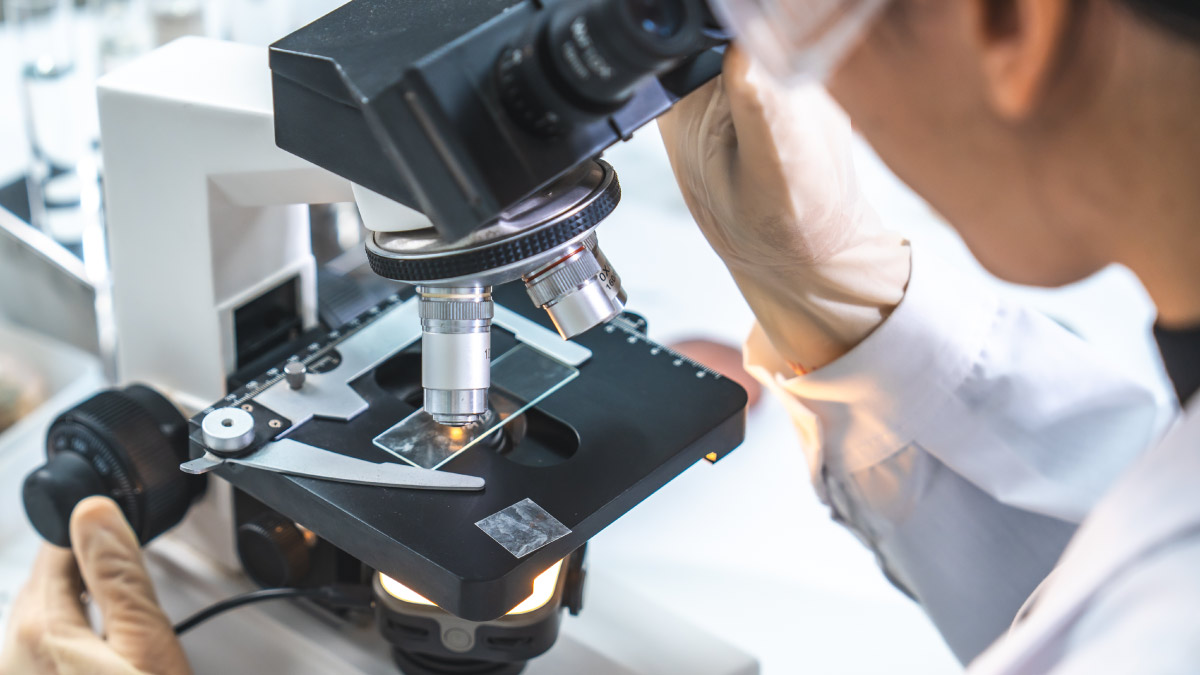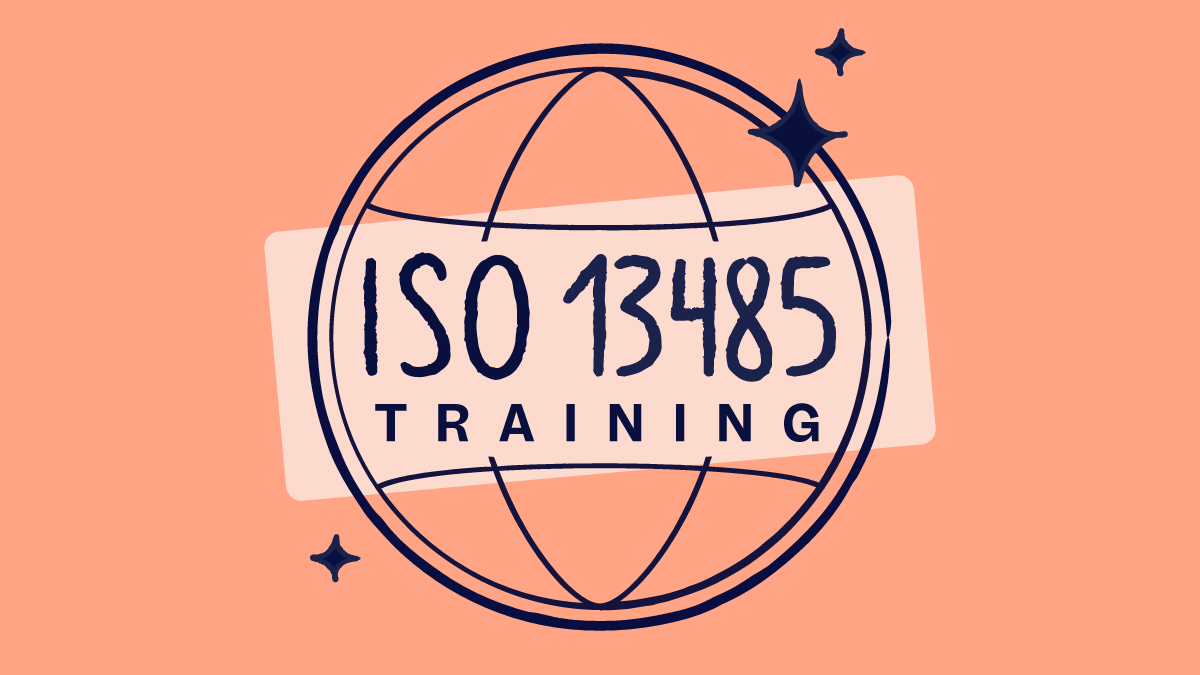
In the medical device industry, quality management isn’t just about efficiency or customer satisfaction — it’s about patient safety.
That’s why having a strong ISO 13485 QMS matters so much.
You might think ISO 13485 is just for QA or regulatory affairs, but it touches every part of a medical device company, from production and supply chain to HR and commercial team.
So, what is ISO 13485 quality management system exactly? In simple terms, it’s an internationally recognized framework that helps organizations consistently deliver safe, effective, and compliant devices.
If you’re in the medical device space, understanding and implementing an ISO 13485 QMS is highly valuable.
In this post, we’ll walk you through what ISO 13485 actually is, why it’s so important, and what it takes to align with it!
Key takeaways
What is ISO 13485 Quality Management System?
Technically speaking, ISO 13485:2016+A11:2021 (the most recent version) lays out the requirements for a QMS that consistently meets both customer and regulatory demands. It is essential for achieving device approval in the EU and is leveraged in many global markets.
ISO 13485 covers the entire lifecycle of a medical device. That means everything from design and development to production and storage, to distribution and even post-market surveillance. It requires documented processes, risk management at every stage, and clear accountability across the company.
In practice, an ISO 13485 QMS is the scaffolding that holds all the moving parts of a medical device business together. It ensures that no matter how complex things get, there’s always a structured way to maintain quality and compliance.
The top ISO 13485 mistakes and how to avoid them!
The secret ingredient: Why is ISO 13485 important?
ISO 13485 is the “not-so secret ingredient” of the medical device industry. On the surface, it’s a quality management standard.
But in reality, an ISO 13485 QMS is the ticket that gets you into the global market, and the reason your customers can trust what you make.
ISO 13485 is internationally recognized, which means regulators across the world use it as a benchmark. If your company is certified, you’re showing that your QMS meets strict requirements for safety and reliability. That matters when you’re applying for CE marking in Europe, or when the FDA is reviewing your product in the U.S.
But the benefits go beyond compliance - certification sharpens how a company runs. ISO 13485 helps reduce waste, improve efficiency, and spot risks early.
And then there’s the trust factor.
Customers are more likely to choose a supplier who can prove their devices are manufactured under an ISO 13485 QMS. In a competitive market, trust can be the difference between winning a contract and losing one.
The global medical devices market was valued at USD 542.21 billion in 2024 and is projected to grow to USD 886.68 billion by 2032. That means more companies will need to compete globally, and having ISO 13485 certification is a strong way to do just that.
In short, ISO 13485 isn’t just about ticking compliance boxes. It’s about creating safer devices, smoother operations, and a stronger global reputation.
ISO 13485 requirements: What you need to know for your ISO 13485 QMS
While the first three clauses of the standard - scope, normative references, and terms and definitions - are mainly introductory, the last five clauses define the mandatory ISO 13485 requirements and are where your QMS comes to life.
These clauses follow a Plan-Do-Check-Act (PDCA) cycle, helping organizations continuously improve their processes. By structuring your ISO 13485 QMS around them, you’ll ensure every stage of your device lifecycle — from design to post-market surveillance — is covered in a compliant and traceable way.
Here’s an ISO 13485 requirements cheat sheet of the clauses and what they mean for your QMS:

1. Scope
The scope describes the standard’s purpose and use. If any requirements permit exclusions, the organization can state these requirements with a justification for their exclusion. For clause(s) that are decided to be not applicable, the organization records the justification by using this standard.
2. Normative references
This explains documents that are normatively referenced throughout the standard.
3. Terms and definitions
These contain descriptions of the terminology used throughout the standard.
4. Quality Management System
This clause highlights the general medical device QMS requirements, the documentation requirements to meet the standard, and the requirements for the quality manual and medical device file.
5. Management responsibility
This clause requires management to be involved in finance and policy decisions. It ensures that the quality policy, objectives, support, company-wide understanding, overview of the QMS, and delegation of resources are under the direct responsibility of company leadership.
Management’s commitment should contain the following:
- Communicating the importance of meeting customers’ and regulatory requirements
- Setting a quality policy
- Ensuring quality objectives are established
- Involving management review meetings
- Providing resources as needed
6. Resource management
Management should ensure and provide adequate resources, including personnel, buildings, workspace, and process equipment (hardware and software), services (transportation, communication, and IT).
In addition, the QMS must include processes that ensure maintenance, monitoring, and control activities are performed as required. The work environment should be monitored and controlled regularly for cleaning, gowning, and contamination.
7. Product realization
This requires everything needed to realize the product, from planning (design and development) to manufacturing, implementation, and support of medical devices.
Product design and development, their controls, and the criteria for risk management (assessment, analysis, and reduction) are laid out in this clause. Furthermore, the following requirements are defined here:
- Purchasing process
- Production and service requirements
- Control of monitoring and measuring equipment
8. Measurement, analysis, and improvement
The final clause offers instructions on how to incorporate feedback and other related information that will enable management to maintain the effectiveness of the QMS, including:
- Customer complaints and the handling of adverse events
- Internal audits
- Feedback
- Notifying regulatory authorities
- Monitoring and measuring:
- Processes
- Products, including non-conformities
- Improvements and CAPAs
- Data analytics
- Control of nonconforming products:
- Actions for when the nonconforming product is detected before or after delivery
- Rework

How to get ISO 13485 certification?
Getting ISO 13485 certification might seem daunting at first, but it’s really just a structured process. If you’re wondering how to get ISO 13485 certification, here’s a five-step roadmap to guide you:

Step 1: Gap analysis
Start by reviewing your current quality management system against ISO 13485 requirements. This step gives you a clear roadmap for what to fix before the certification audit.
Step 2: Implement or update your QMS
Address the gaps you found. This could include updating documentation, improving traceability, establishing risk management processes, or training staff. The goal is to ensure your QMS fully aligns with all mandatory clauses.
Step 3: Internal audit
Conduct an internal audit to check that your QMS is working effectively. This is a chance to catch issues before the certification body sees them.
Step 4: Management review
Leadership must review the QMS to confirm that it meets objectives and regulatory requirements.
Step 5: Certification audit
A recognized certification body will audit your QMS in two stages: documentation review and on-site assessment.
If you pass, the certification body issues your ISO 13485 certificate.
If you get a non-conformity, fix it promptly and move forward.
Scilife Tip for success:
- Engage your team early. Quality is everyone’s responsibility.
- Keep documentation clear and accessible; auditors love organized records.
Treat CAPAs and continuous improvement as ongoing, not one-off tasks.- Consider hiring a consultant or mentor if your team is new to ISO 13485; their experience can save months of trial and error.
Top tips for implementing an ISO 13485 QMS
Building a compliant ISO 13485 QMS doesn’t have to be overwhelming. A few strategic approaches make the compliance process much smoother, and the results stick longer.
Top tips for creating a compliant ISO 13485 QMS:
The four Ps provide the “hard management necessities.” The four Ps of Planning, Processes, and People are the keys to delivering quality products and services to the customers and improving overall Performance:- Start with strong documentation: Clear, well-organized documentation is the backbone of any QMS.
- Implement risk management early: Incorporate risk assessment into every stage of product design, development, and production.
- Embrace ISO 13485 QMS software: Using an eQMS can be a game-changer. It streamlines documentation, tracks CAPAs, manages audits, and ensures version control.
- Focus on continuous improvement: ISO 13485 isn’t a one-time project. Use internal audits, feedback, and performance metrics to constantly refine processes.
Conclusion
Achieving ISO 13485 compliance doesn’t have to feel like climbing a mountain blindfolded. By understanding the standard, structuring your QMS around its clauses, and committing to continuous improvement, you can create an ISO 13485 QMS system that not only meets regulatory requirements but also strengthens your operations and builds trust with customers.
One of the biggest game-changers is using an electronic quality management system (eQMS). Tools like Scilife’s eQMS streamline document control, CAPA tracking, audits, and training, making it far easier to maintain compliance across all ISO 13485 QMS requirements.
In the end, it’s not just about certification - it’s about building a quality culture that ensures safer, more reliable medical devices for everyone who uses them.
Build and maintain an ISO 13485 QMS without the headaches! Discover how our ISO 13485-compliant eQMS will make it easier for you!
FAQs - Commonly Asked Questions
What is ISO 13485 in plain English?
ISO 13485 is an internationally recognized standard that tells medical device companies how to run a quality management system (QMS). It’s a blueprint to make sure your devices are safe, reliable, and compliant with regulations worldwide.
Is ISO 13485 a regulation or a standard?
It’s a standard, not a regulation. However, it’s closely aligned with regulatory requirements like the EU’s Medical Device Regulation (MDR) and FDA rules. Being compliant with ISO 13485 makes it easier to meet legal obligations in different markets.
What does it mean to be ISO 13485 certified?
Certification means a recognized body has audited your QMS and confirmed that it meets all ISO 13485 requirements. It’s proof that your processes for design, production, and post-market activities are structured, controlled, and effective.
Is ISO 13485 required for CE marking?
Strictly speaking, ISO 13485 certification isn’t a legal requirement for CE marking. However, it’s widely recognized as the most straightforward way to demonstrate that your quality management system meets the EU MDR or IVDR requirements. In practice, notified bodies expect to see ISO 13485 certification as part of the CE marking process.
How long does it take to get ISO 13485 certification?
The timeline varies depending on your company's size and readiness. Typically, it takes anywhere from 6 to 12 months, including gap analysis, implementation, and internal and external audits.
How much does ISO 13485 certification cost?
Costs depend on your organization’s size, complexity, and whether you use consultants or an eQMS. On average, small to mid-sized companies may spend $10,000–$30,000, while larger organizations can spend significantly more.
Can a company be compliant without certification?
Yes, a company can implement all the ISO 13485 requirements internally without formal certification. However, certification proves compliance and simplifies audits.
What are the benefits of using an eQMS for ISO 13485?
An electronic QMS streamlines documentation, CAPAs, audits, and training. It reduces human error, saves time, and provides real-time visibility into your quality processes.










